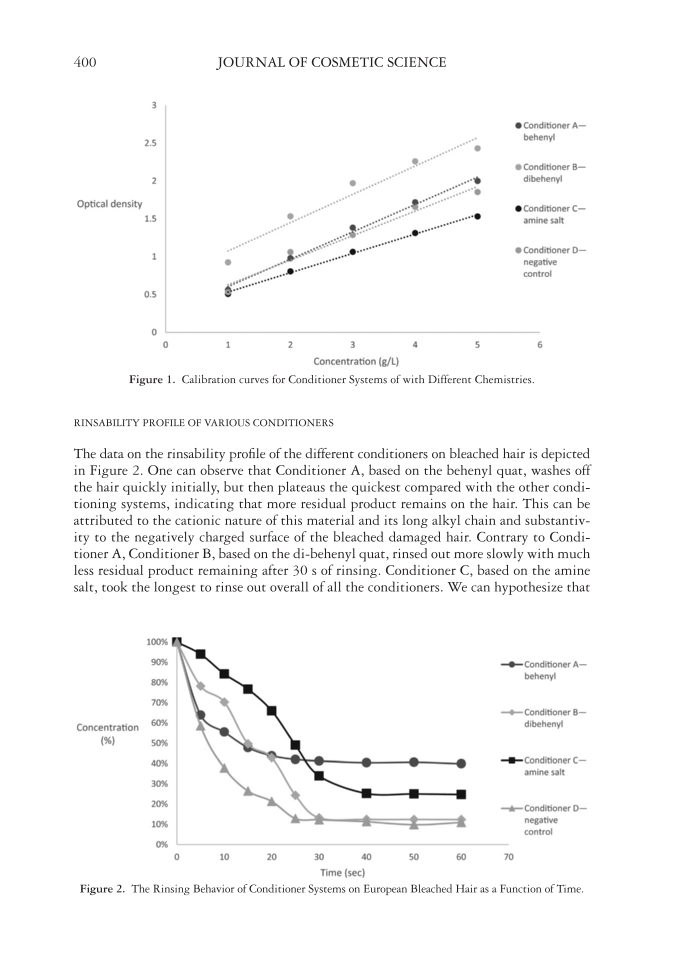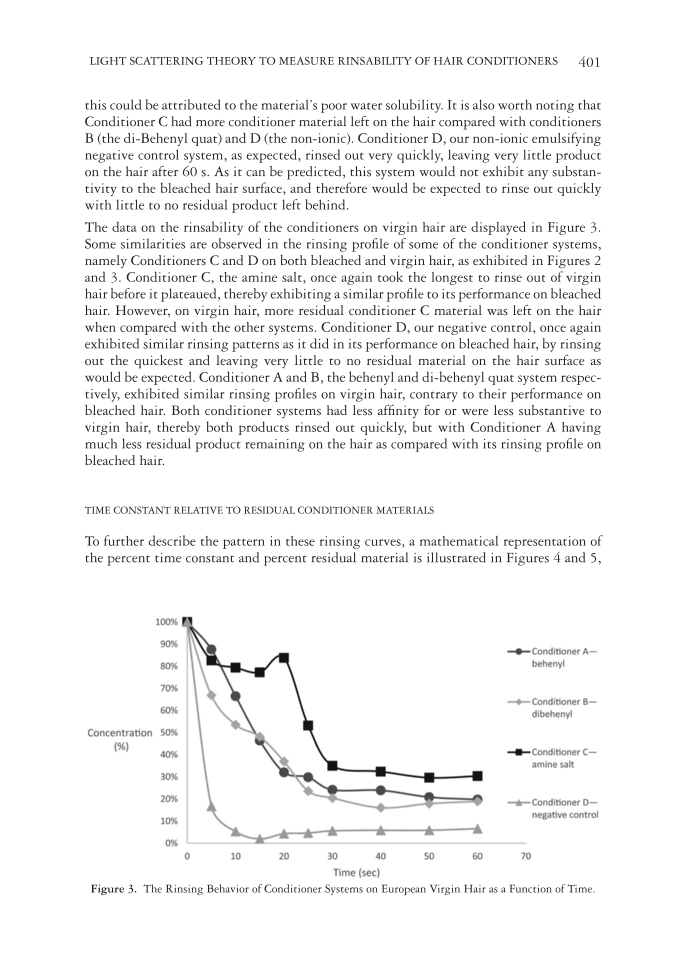JOURNAL OF COSMETIC SCIENCE 400 RINSABILITY PROFILE OF VARIOUS CONDITIONERS The data on the rinsability profi le of the different conditioners on bleached hair is depicted in Figure 2. One can observe that Conditioner A, based on the behenyl quat, washes off the hair quickly initially, but then plateaus the quickest compared with the other condi- tioning systems, indicating that more residual product remains on the hair. This can be attributed to the cationic nature of this material and its long alkyl chain and substantiv- ity to the negatively charged surface of the bleached damaged hair. Contrary to Condi- tioner A, Conditioner B, based on the di-behenyl quat, rinsed out more slowly with much less residual product remaining after 30 s of rinsing. Conditioner C, based on the amine salt, took the longest to rinse out overall of all the conditioners. We can hypothesize that Figur e 1. Calibration curves for Conditioner Systems of with Different Chemistries. Figure 2. The Rinsing Behavior of Conditioner Systems on European Bleached Hair as a Function of Time.
LIGHT SCATTERING THEORY TO MEASURE RINSABILITY OF HAIR CONDITIONERS 401 this could be attributed to the material’s poor water solubility. It is also worth noting that Conditioner C had more conditioner material left on the hair compared with conditioners B (the di-Behenyl quat) and D (the non-ionic). Conditioner D, our non-ionic emulsifying negative control system, as expected, rinsed out very quickly, leaving very little product on the hair after 60 s. As it can be predicted, this system would not exhibit any substan- tivity to the bleached hair surface, and therefore would be expected to rinse out quickly with little to no residual product left behind. The data on the rinsability of the conditioners on virgin hair are displayed in Figure 3. Some similarities are observed in the rinsing profi le of some of the conditioner systems, namely Conditioners C and D on both bleached and virgin hair, as exhibited in Figures 2 and 3. Conditioner C, the amine salt, once again took the longest to rinse out of virgin hair before it plateaued, thereby exhibiting a similar profi le to its performance on bleached hair. However, on virgin hair, more residual conditioner C material was left on the hair when compared with the other systems. Conditioner D, our negative control, once again exhibited similar rinsing patterns as it did in its performance on bleached hair, by rinsing out the quickest and leaving very little to no residual material on the hair surface as would be expected. Conditioner A and B, the behenyl and di-behenyl quat system respec- tively, exhibited similar rinsing profi les on virgin hair, contrary to their performance on bleached hair. Both conditioner systems had less affi nity for or were less substantive to virgin hair, thereby both products rinsed out quickly, but with Conditioner A having much less residual product remaining on the hair as compared with its rinsing profi le on bleached hair. TIME CONSTANT RELATIVE TO RESIDUAL CONDITIONER MATERIALS To further describe the pattern in these rinsing curves, a mathematical representation of the percent time constant and percent residual material is illustrated in Figures 4 and 5, Figure 3. The Rinsing Behavior of Conditioner Systems on European Virgin Hair as a Function of Time.
Purchased for the exclusive use of nofirst nolast (unknown) From: SCC Media Library & Resource Center (library.scconline.org)









































































































